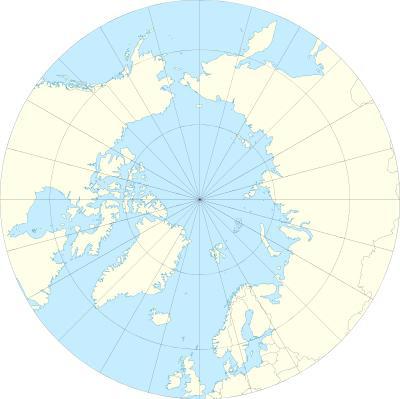The Arctic Ocean is the ocean that is considered the smallest in size on Earth. The geographical location of the Arctic Ocean is straightforward - it is located in the Northern Hemisphere, in the middle of the major continents of Eurasia and North America. The territories of the countries of Denmark, Norway, Canada, the USA, and Russia adjoin this severe reservoir of water.
Its international status is not regulated, and during the year cargo ships of many countries of the world pass through it. What is the relief of the bottom of the Arctic Ocean?
General geological structure of the bottom
The harsh ocean is very shallow for a reservoir of this scale. About forty percent of its area is no deeper than two hundred meters. What explains this? In fact, everything is simple. The relief of the bottom of the Arctic Ocean is occupied by the shelf by 45 percent, and by the submarine margins of nearby continents by 70 percent.
Our country's science divides the reservoir into such water areas as: the Arctic basin (the deepest central part), the North European basin (and the slope of the Barents Sea), the Canadian basin (with the waters of the Hudson Bay, the Baffin Sea, etc.). A map of the Arctic Ocean allows you to consider all these details in detail.
North European Basin
Mid-ocean ridges are the basis of the bottom topography of this part of the ocean. There is also a rift region of Iceland, which is famous for its high hydrothermal activity and volcanism. The Kolbeinsey Ridge, Jan Mayen Zone, Mona Ridge characterize the bottom of the North European Basin. There is also the Voring Plateau, which divides the Norwegian Sea into two large basins . To the west of the Norwegian Basin is the Greenland Basin.
The relief of the ocean floor is more flat here, however, the maximum depth of the Arctic Ocean is 5527 m.
Canadian pool
The Straits of the Northwest Passage are the main part of the Canadian Basin. The depths of the straits reach 500 meters. The relief of the ocean floor in this place can be called a relict glacial relief. The outlines of the islands and straits are extremely complex and rugged. All this indicates a very recent (comparatively, of course) glaciation of this region of the ocean. And many islands of the Canadian archipelago are also occupied by ice. Hudson Bay is shallow, it is characterized by glacial landforms. The Baffin Sea, on the contrary, lies in a deep hollow with a wide shelf and a great depth reaching 2141 m.
Arctic pool
The Arctic basin is the leading part of the Arctic Ocean, occupying most of its territory. The shelf, which occupies a vast territory and has an average width of 800 m, is divided into: Barents Sea, Laptev, Siberian-Chukchi and Kara (according to the names of adjacent seas). Bottom sediments and their nature are an important element in the analysis of the bottom topography of any ocean.
Deposits at the bottom of the Arctic Ocean are terrigenous in nature. Most of all there is precipitation of fine mechanical composition. Iron-manganese and sand deposits can be found in separate waters of the seas. Due to extremely difficult climatic conditions, the ice cover has not been leaving the ocean for almost the entire year, however, at some moments it becomes especially mobile (which helps shipping very well).
The bottom relief of the White and Barents Seas
The geographical position of the Arctic Ocean already speaks of the severity of the climate and the complexity of survival in it. But what is the bottom structure of its large and famous seas? The White Sea is an inland body of water, and it has a very complex bottom relief. Its depression is located on the outskirts of the Baltic shield and the Russian platform. 351 meters - a record depth of the White Sea. It has a whole collection of depressions that constantly alternate with areas of shallow water. It has great depths and Kandalaksha Bay. The northern region of the sea is continuous shallow water, the depth here is rarely more than 30 meters. The bottom relief of the Arctic Ocean in the vicinity of the Barents Sea is even more complex. Strong bottom irregularities are caused by frequent and strong movements of tectonic plates. In the center of the sea there are elevations - the Central Bank, Perseus. The deep part of the salt reservoir is located just between the Central Bank and the peninsula of Northern Europe (Scandinavia). The depths are more than 300 m. The southern part of the relief is more even because of the glaciers that occurred not so long ago. The outskirts of the reservoir are composed of folded complexes of very different ages (Caledonian, Archean-Proterozoic, etc.).
The bottom relief of the Kara and the Laptev Sea
The most recognizable feature of the Kara Sea relief is its deep-sea trenches that arose a long time ago (in pre-Quaternary times). The northern part of the sea is famous for its deep-sea trogs. St. Anna has a depth of up to 620 m, the Voronin trough - up to 450 m. The Central Kars Upland is located just between them.

The southeast of the sea is very shallow. It has many islets. The relief of the bottom of the Arctic Ocean in the Laptev Sea region is mostly a shelf. About half of the sea has a depth of up to 50 meters. The southern area is shallow, flat, with rare hills. Despite the harsh climatic conditions, the Arctic Ocean does not go unnoticed and unexplored. In a season that does not last long, groups of researchers (who want to know the features of the bottom topography) and even wealthy tourists tend to come here. True, the nature of these places is considered one of the most vulnerable ecological systems of our planet. Many scientists are trying to solve the problems of the ocean.